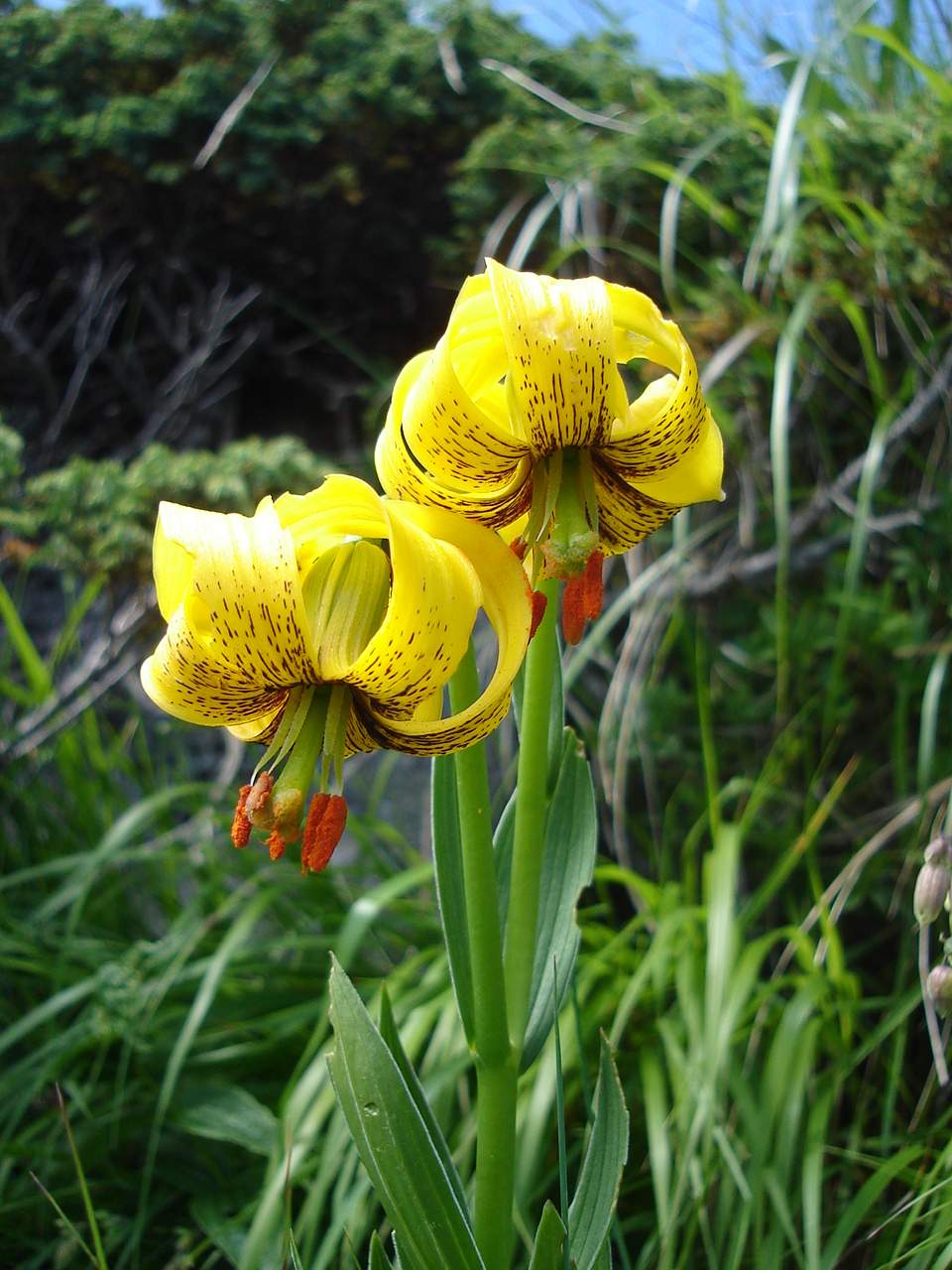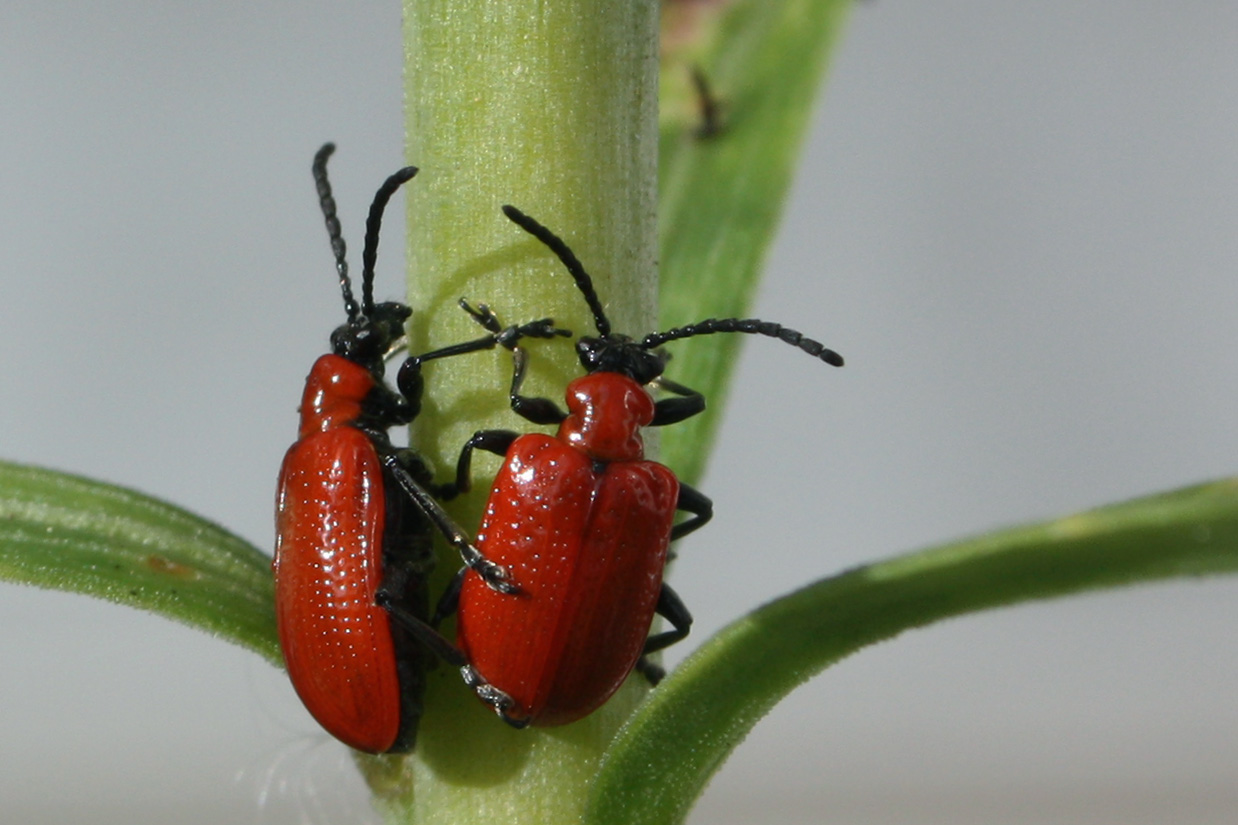|
Liliopsida
Liliopsida Batsch (synonym: Liliatae) is a botanical name for the class containing the family Liliaceae (or Lily Family). It is considered synonymous (or nearly synonymous) with the name monocotyledon. Publication of the name is credited to Scopoli (in 1760): see author citation (botany). This name is formed by replacing the termination ''-aceae'' in the name Liliaceae by the termination ''-opsida'' (Art 16 of the ICBN). Although in principle it is true that circumscription of this class will vary with the taxonomic system being used, in practice this name is very strongly linked to the Cronquist system, and the allied Takhtajan system. These two are the only major systems to use the name, and in both these systems it refers to the group more widely known as the monocotyledons. Earlier systems referred to this group by the name Monocotyledones, with Monocotyledoneae an earlier spelling (these names may be used in any rank). Systems such as the Dahlgren and Thorne systems (more ... [...More Info...] [...Related Items...] OR: [Wikipedia] [Google] [Baidu] |
Monocotyledon
Monocotyledons (), commonly referred to as monocots, ( Lilianae '' sensu'' Chase & Reveal) are flowering plants whose seeds contain only one embryonic leaf, or cotyledon. A monocot taxon has been in use for several decades, but with various ranks and under several different names. The APG IV system recognises its monophyly but does not assign it to a taxonomic rank, and instead uses the term "monocots" to refer to the group. Monocotyledons are contrasted with the dicotyledons, which have two cotyledons. Unlike the monocots however, the dicots are not monophyletic and the two cotyledons are instead the ancestral characteristic of all flowering plants. Botanists now classify dicots into the eudicots ("true dicots") and several basal lineages from which the monocots emerged. The monocots are extremely important economically, culturally, and ecologically, and make up a majority of plant biomass used in agriculture. Common crops such as dates, onions, garlic, rice, wheat, maize, ... [...More Info...] [...Related Items...] OR: [Wikipedia] [Google] [Baidu] |
Monocotyledones
Monocotyledons (), commonly referred to as monocots, ( Lilianae ''sensu'' Chase & Reveal) are flowering plants whose seeds contain only one embryonic leaf, or cotyledon. A monocot taxon has been in use for several decades, but with various ranks and under several different names. The APG IV system recognises its monophyly but does not assign it to a taxonomic rank, and instead uses the term "monocots" to refer to the group. Monocotyledons are contrasted with the dicotyledons, which have two cotyledons. Unlike the monocots however, the dicots are not monophyletic and the two cotyledons are instead the ancestral characteristic of all flowering plants. Botanists now classify dicots into the eudicots ("true dicots") and several basal lineages from which the monocots emerged. The monocots are extremely important economically, culturally, and ecologically, and make up a majority of plant biomass used in agriculture. Common crops such as dates, onions, garlic, rice, wheat, maize, and ... [...More Info...] [...Related Items...] OR: [Wikipedia] [Google] [Baidu] |
Monocotyledoneae
Monocotyledons (), commonly referred to as monocots, ( Lilianae '' sensu'' Chase & Reveal) are flowering plants whose seeds contain only one embryonic leaf, or cotyledon. A monocot taxon has been in use for several decades, but with various ranks and under several different names. The APG IV system recognises its monophyly but does not assign it to a taxonomic rank, and instead uses the term "monocots" to refer to the group. Monocotyledons are contrasted with the dicotyledons, which have two cotyledons. Unlike the monocots however, the dicots are not monophyletic and the two cotyledons are instead the ancestral characteristic of all flowering plants. Botanists now classify dicots into the eudicots ("true dicots") and several basal lineages from which the monocots emerged. The monocots are extremely important economically, culturally, and ecologically, and make up a majority of plant biomass used in agriculture. Common crops such as dates, onions, garlic, rice, wheat, maize, and ... [...More Info...] [...Related Items...] OR: [Wikipedia] [Google] [Baidu] |
Commelinidae
In plant taxonomy, commelinids (originally commelinoids) is a clade of flowering plants within the monocots, distinguished by having cell walls containing ferulic acid. Well-known commelinids include palms and relatives (order Arecales), dayflowers, spiderworts, kangaroo paws, and water hyacinth (order Commelinales), grasses, bromeliads, rushes, and sedges (order Poales), ginger, cardamom, turmeric, galangal, bananas, plantains, and bird of paradise flower (order Zingiberales). The commelinids are the only clade that the APG IV system has informally named within the monocots. The remaining monocots are a paraphyletic unit. Also known as the commelinid monocots it forms one of three groupings within the monocots, and the final branch; the other two groups are the alismatid monocots and the lilioid monocots. Description Members of the commelinid clade have cell walls containing UV-fluorescent ferulic acid. Taxonomy and Phylogeny The commelinids constitute a well-support ... [...More Info...] [...Related Items...] OR: [Wikipedia] [Google] [Baidu] |
Cronquist System
The Cronquist system is a list of systems of plant taxonomy, taxonomic classification system of angiosperms, flowering plants. It was developed by Arthur Cronquist in a series of monographs and texts, including ''The Evolution and Classification of Flowering Plants'' (1968; 2nd edition, 1988) and ''An Integrated System of Classification of Flowering Plants'' (1981) (''see'' #Bibliography, Bibliography). Cronquist's system places flowering plants into two broad classes, Magnoliopsida (dicotyledons) and Liliopsida (monocotyledons). Within these classes, related orders are grouped into subclasses. While the scheme was widely used, in either the original form or in adapted versions, many botanists now use the Angiosperm Phylogeny Group classification for the orders and families of flowering plants, first developed in 1998. The system as laid out in Cronquist's ''An Integrated System of Classification of Flowering Plants'' (1981) counts 64 orders and 321 families in class Magnoliopsida a ... [...More Info...] [...Related Items...] OR: [Wikipedia] [Google] [Baidu] |
Liliidae
Liliidae is a botanical name at the rank of subclass. Circumscription of the subclass will vary with the taxonomic system being used (there are many such systems); the only requirement being that it includes the family Liliaceae. Liliidae in Takhtajan system The Takhtajan system treats this as one of six subclasses within class Liliopsida (= monocotyledons). This subclass consists of: * subclass Liliidae *: superorder Lilianae *:: order Melanthiales *:: order Colchicales *:: order Trilliales *:: order Liliales *:: order Alstroemeriales *:: order Iridales *:: order Tecophilaeales *:: order Burmanniales *:: order Hypoxidales *:: order Orchidales *:: order Amaryllidales *:: order Asparagales *:: order Xanthorrhoeales *:: order Hanguanales *: superorder Dioscoreanae *:: order Stemonales *:: order Smilacales *:: order Dioscoreales *:: order Taccales Liliidae in Cronquist system The Cronquist system treats this as one of five subclasses within class Liliopsida (= monoco ... [...More Info...] [...Related Items...] OR: [Wikipedia] [Google] [Baidu] |
Takhtajan System
A list of systems of plant taxonomy, system of plant taxonomy, the Takhtajan system of plant classification was published by Armen Takhtajan, in several versions from the 1950s onwards. It is usually compared to the Cronquist system. It admits Paraphyly, paraphyletic groups. Systems The first classification was published in Russian in 1954, and came to the attention of the rest of the world after publication of an English translation in 1958 as ''Origin of Angiospermous Plants''. Further versions appeared in 1959 (''Die Evolution der Angiospermen'') and 1966 (''Sistema i filogeniia tsvetkovykh rastenii''). The latter popularised Takhtajan's system when it appeared in English in 1969 (Flowering plants: Origin and dispersal). A further revision appeared in 1980. 1966 system * Magnoliophyta (Angiospermae) p. 51 ** Class: Magnoliatae (Dicotyledones) p. 51 ** Class: Liliatae (Monocotyledones) p. 461 *** Subclass A: Alismidae p. 461 *** Subclass B: Liliidae p. ... [...More Info...] [...Related Items...] OR: [Wikipedia] [Google] [Baidu] |
Reveal System
A 20th-century system of plant taxonomy, the Reveal system (see also the Thorne & Reveal system) of plant classification was drawn up by the American botanist James Reveal (1941-2015). The system was published online in 1997 in ten parts as lecture notes comparing the major systems in use at that time. Subsequently, Reveal became an author with the consensus Angiosperm Phylogeny Group (APG) on the APG II 2003 and APG III 2009 processes. Although this largely supplanted the earlier and competing systems, he collaborated with Robert Thorne on his system (2007), and subsequently continued to develop his own system. 1997 system * division Magnoliophyta angiosperms*: class Magnoliopsida *:: subclass Magnoliidae *: class Piperopsida *:: subclass Piperidae *:: subclass Nymphaeidae *:: subclass Nelumbonidae *: class Liliopsida monocots*:: subclass Triurididae *:: subclass Aridae *:: subclass Liliidae *:: subclass Arecidae *:: subclass Commelinidae *:: subclass Zing ... [...More Info...] [...Related Items...] OR: [Wikipedia] [Google] [Baidu] |
Lilianae
Lilianae (also known as Liliiflorae) is a botanical name for a superorder (that is, a rank higher than that of order) of flowering plants. Such a superorder of necessity includes the type family Liliaceae (and usually the type order Liliales). Terminations at the rank of superorder are not standardized by the International Code of Nomenclature for algae, fungi, and plants (ICN), although the suffix ''-anae'' has been proposed. Lilianae, introduced in 1966 as a name for a superorder, progressively replaced the older term Liliiflorae, introduced in 1825 as a name for an order. Taxonomy History Early history - Liliiflorae Liliiflorae was a term introduced by Carl Adolph Agardh in 1825 as a higher order to include the Liliaceae (which he called Coronariae) and related families. Argadh, together with De Candolle developed the concept of ordered botanical ranks, in this case grouping together De Jussieu's (1789) recently defined collections of genera (families) into higher ... [...More Info...] [...Related Items...] OR: [Wikipedia] [Google] [Baidu] |
Liliaceae
The lily family, Liliaceae, consists of about 15 genera and 610 species of flowering plants within the order Liliales. They are monocotyledonous, perennial, herbaceous, often bulbous geophytes. Plants in this family have evolved with a fair amount of morphological diversity despite genetic similarity. Common characteristics include large flowers with parts arranged in threes: with six colored or patterned petaloid tepals (undifferentiated petals and sepals) arranged in two whorls, six stamens and a superior ovary. The leaves are linear in shape, with their veins usually arranged parallel to the edges, single and arranged alternating on the stem, or in a rosette at the base. Most species are grown from bulbs, although some have rhizomes. First described in 1789, the lily family became a paraphyletic "catch-all" ( wastebasket) group of lilioid monocots that did not fit into other families and included a great number of genera now included in other families and in some case ... [...More Info...] [...Related Items...] OR: [Wikipedia] [Google] [Baidu] |
Botanical Name
A botanical name is a formal scientific name conforming to the ''International Code of Nomenclature for algae, fungi, and plants'' (ICN) and, if it concerns a plant cultigen, the additional cultivar or cultivar group, Group epithets must conform to the ''International Code of Nomenclature for Cultivated Plants'' (ICNCP). The code of nomenclature covers "all organisms traditionally treated as algae, Fungus, fungi, or plants, whether fossil or non-fossil, including blue-green algae (Cyanobacteria), Chytridiomycota, chytrids, oomycetes, slime moulds and Photosynthesis, photosynthetic protists with their taxonomically related non-photosynthetic groups (but excluding Microsporidia)." The purpose of a formal name is to have a single name that is accepted and used worldwide for a particular plant or plant group. For example, the botanical name ''Bellis perennis'' denotes a plant species which is native to most of the countries of Europe and the Middle East, where it has accumulated variou ... [...More Info...] [...Related Items...] OR: [Wikipedia] [Google] [Baidu] |





